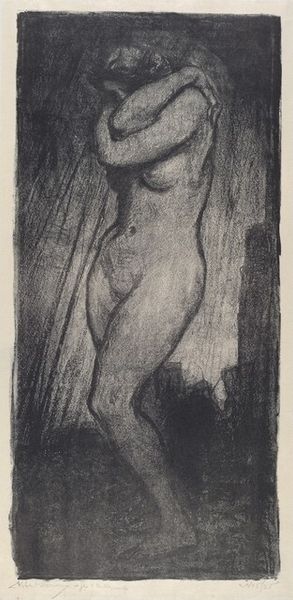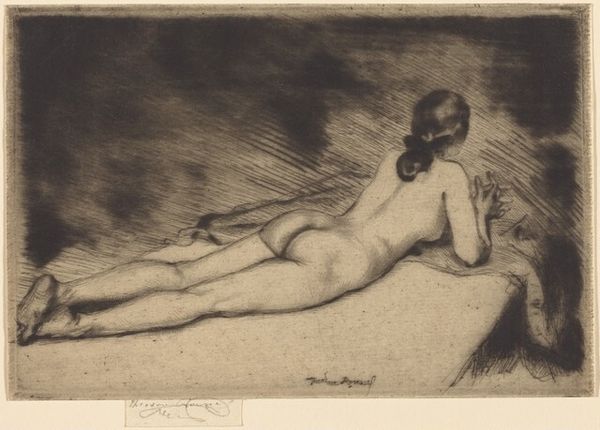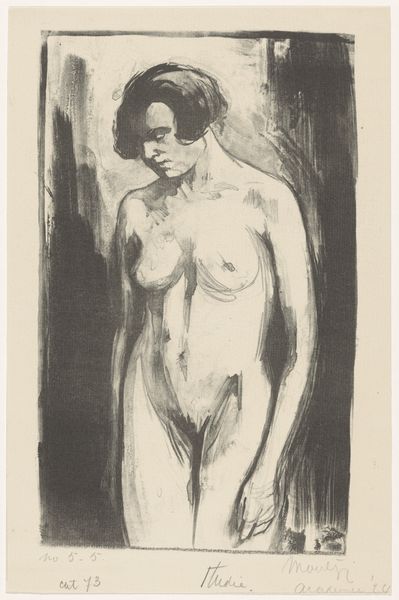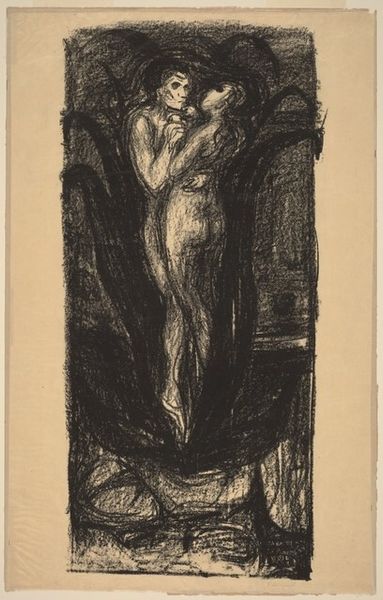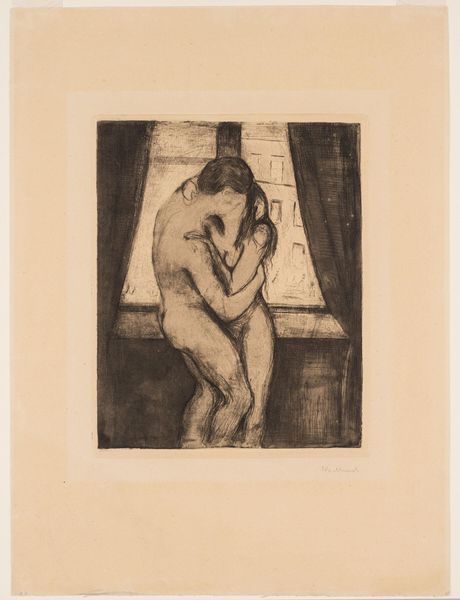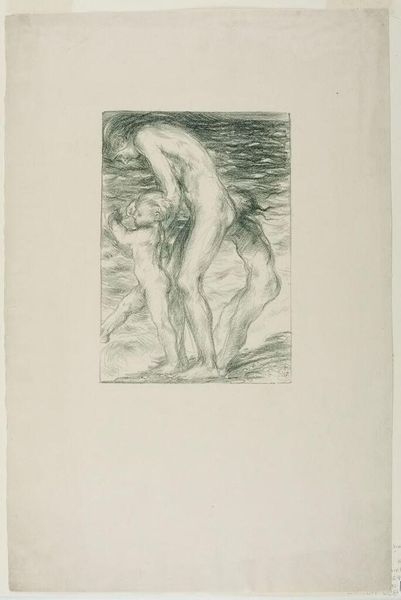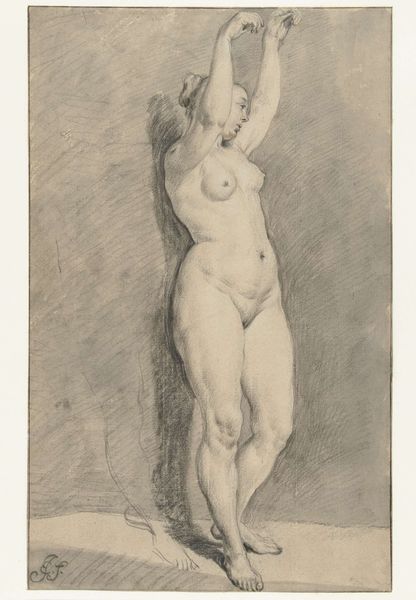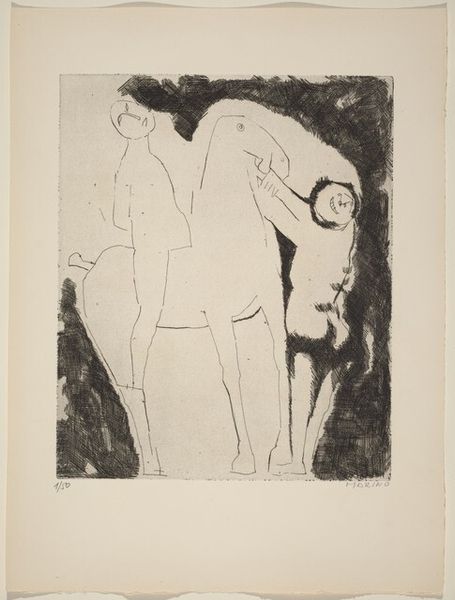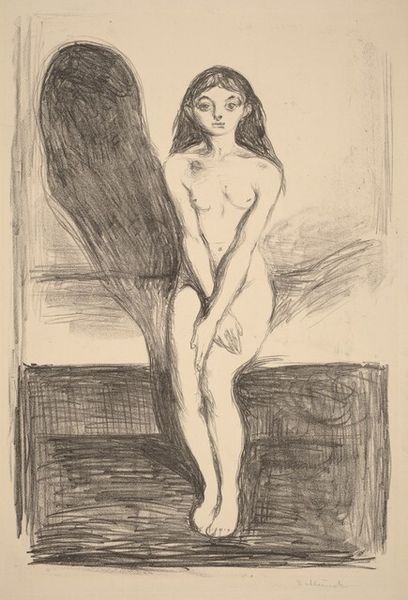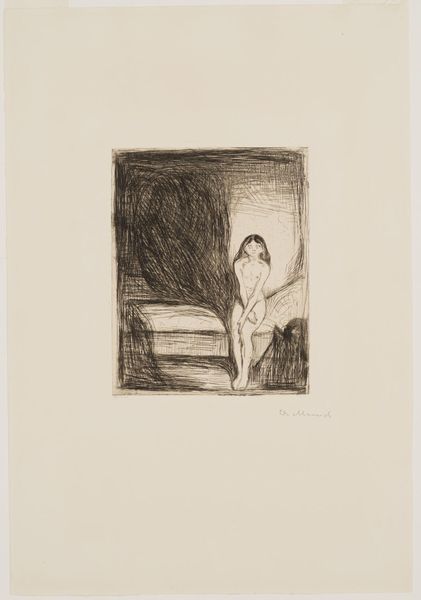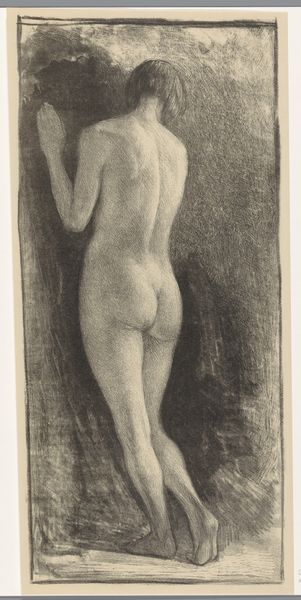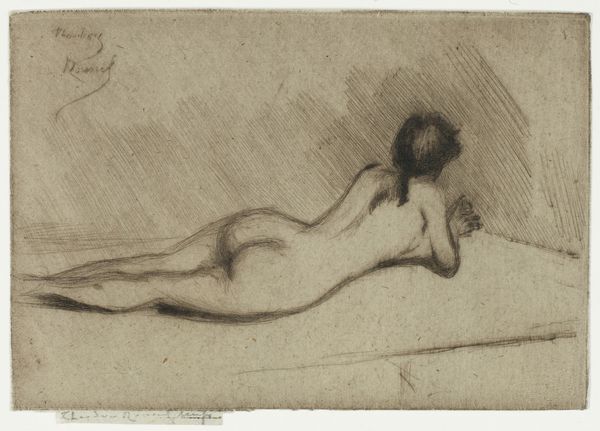
drawing, print, etching
#
drawing
# print
#
etching
#
charcoal drawing
#
figuration
#
symbolism
#
nude
Copyright: Public domain
Editor: So, here we have "Femme Debout," created around 1902 by Théophile Alexandre Steinlen. It's an etching and print, a delicate depiction of a standing woman. The light and shadow create a somewhat somber and intimate atmosphere. What’s your take on it? Curator: Immediately, I'm drawn to the processes at play here. It's an etching, which is inherently tied to reproducibility and dissemination. How does this relate to Steinlen's potential audience, given the historical context? Consider that this piece could reach a broad public, complicating any notion of it as a precious or singular art object. What labor went into creating the printing plates, and how might we see reflections of working-class conditions mirrored in the depiction of this woman, even if indirectly? Editor: That’s an interesting point, I hadn't considered the socio-economic factors related to the printmaking process. It felt like a study of form, rather than social commentary. Curator: The form is crucial, yes, but what informs the form? We have to look beyond just aesthetic value. The materiality of the print, the type of ink used, the paper – all contribute to our understanding of the final product. Did Steinlen personally oversee the printing process? Did he use cheaper materials to make it more accessible? These material choices can challenge conventional distinctions between fine art and commercial work. Editor: So you're saying we should consider its mass-producible nature? How the work becomes democritized through print? Curator: Exactly. By focusing on how the artwork was made and consumed, we gain insight into the social dynamics of the time, shifting the discussion away from idealized notions of artistic genius towards a consideration of art as a form of labor and production. Editor: That's really helpful. I’m now seeing the work in a very different light, it's not only aesthetic value, but the process of artistic and manual labour. Curator: Indeed. Looking at the materials, tools and labor allows us to investigate so many avenues, opening the path to truly understanding a work.
Comments
No comments
Be the first to comment and join the conversation on the ultimate creative platform.
